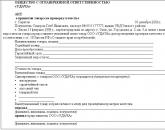Working capital turnover: formula, indicators
Each enterprise located in the segment of the market economy operates with the aim of making a profit. In order to maximize its amount, the management makes a number of decisions that contribute to the optimization of all indicators. The financial and analytical service of the enterprise helps to collect the necessary information.
One of the most important areas of her work is the study of such an indicator as the turnover of working capital. The amount of profit directly depends on its speed. After conducting a qualitative analysis of the company's activities in terms of indicators of the movement of working capital, it is possible to track negative trends in the development of the company and eliminate them in the future.
The total value of working capital
Working capital represents the resources directed to circulation funds and production funds to promote the continuity of economic activities of various organizations.
This property of the enterprise forms assets that, during one cycle, transfer the full value to the products. At the same time, working capital loses its material-material form. The time for which one cycle of production takes place reflects the turnover ratio of the working capital of the enterprise.
The circulation of capital goes through three stages. At the procurement stage, financial sources are invested in the resources necessary for the manufacture of products. Next comes the production stage. Raw materials, materials, etc. are turned into finished goods. The last stage is marketing. The company receives cash resources that reflect the result of its activities.
Current assets structure
Working capital turnover deserves increased attention from financial managers and management. This indicator reflects how quickly the production cycle occurs. It involves circulation funds and production funds.

To find ways to accelerate the turnover of working capital by reducing the duration of this period, it is necessary to understand which resources are involved in the cycle.
The circulation funds are responsible for servicing the movement of capital. These include financial sources invested in inventories, unpaid shipped products, money in accounts and on hand, as well as settlement finance. The coefficient that determines the turnover of working capital of enterprises, largely depends on the size of the resources listed above.
Number of working capital
The main criterion for organizing the production process is its continuity, coherence and speed. Calculating the turnover ratio of working capital according to the formula below, financial analysts must determine the optimal amount of resources. 
This is their minimum size, capable of providing a full-fledged production of finished products. To do this, the rationing of working capital is carried out. This procedure is carried out at the time of the current planning. In this case, all the features of the functioning of the object under study are taken into account.
Rationing
Optimal indicators of working capital turnover are achieved with the rational use of resources. For the smooth functioning of the enterprise, the consumption rates and quantities of raw materials, fuel, semi-finished products, etc. are determined.

If there are not enough resources, there will be downtime. This will lead to under-fulfillment of planned programs. And too much accumulation contributes to the irrational use of financial sources. The funds frozen in working capital could be directed to the acquisition of new equipment, scientific research, etc.
Therefore, rationing performs a very important function, reducing the turnover period of working capital. Planning is carried out taking into account the conditions of production as responsibly as possible.
Efficiency mark
Working capital is generated from various sources. They can be the company's net profit, bank loans, commercial payment deferrals, shareholder capital, budget injections, and accounts payable. 
In this case, both paid and free sources are used. Therefore, the finances directed into circulation should bring a profit greater than the payment for their attraction. To carry out a full analysis, the following indicators of working capital turnover are calculated:
- turnover ratio;
- duration of one cycle;
- load factor.
For the process of optimizing this direction, it is important to ensure a better balance between profitability and solvency, own and borrowed financial sources. Therefore, the analysis is done globally.
Without optimization of the capital structure, which is reflected in the form 1 "Balance" of financial statements, it is not possible to obtain a satisfactory result.
Calculation formulas
To assess working capital, a certain system of indicators is used. Initially, the analyst determines the total number of cycles that occur in the study period. From this point of view, the turnover of working capital, the formula of which is given below, is defined as follows:
- Cob \u003d Sales proceeds: Average number of working capital.
For such an analysis, the data of forms 1 and 2 will be needed. The presented calculation based on the formula will have the following form:
- Kob = s. 2110 form 2: (c. 1100 (beginning of period) + c. 1100 (end of period)) : 2.
To present this indicator in days, the turnover of working capital, the formula of which is presented below, looks like this:
- T \u003d D: Cob, where D is the number of days in the study period (can be 360, 90 or 30 days).

For companies producing seasonal goods, such calculations must be performed quarterly or monthly. This will make normalization easier. In order to calculate which component has the greatest effect on slowing down the course of one cycle, it is necessary to determine the private turnover.
Each group included in current assets is calculated separately according to the presented formulas.
Calculation example
To better understand how to calculate the turnover of working capital, you need to consider the analysis with an example. If it is known that in the study period (year) the company received 20% less sales proceeds, this indicates an incorrect operation of its capital.
At the same time, the analyst determined that the average number of current assets increased in the current period from 200 to 240 thousand rubles. The impact of such changes reflects the turnover ratio for the past and present periods. The calculation for the current period will be as follows:
- Kob1 \u003d (1 - 0.2) VR0: Cob1 \u003d 0.8 VR0: 240.
For the previous period, the indicator will be as follows:
- Cob0 = BP0: Ins0 = BP0: 200.
The turnover rate is determined as follows:
- d \u003d Kob1: Kob0 \u003d 0.8VR0: 240: VR0: 200 \u003d 0.67.
It can be concluded that the production cycle has decreased by 33%. With a more detailed study of the structure of current assets, it is possible to find ways to solve this problem. Additional resources are frozen in circulation.
Release or circulation
Slowdown or acceleration of the turnover of working capital leads to the attraction or release of financial resources. To calculate the amount of these funds, the following formula is used:
- OS \u003d BP (end of period): D x (T (end of period) - T (beginning of period)).
The economic effect of such changes makes it clear to the analyst whether the resources were used rationally in the period under study. If the cycle accelerated, with the same amount of working capital, the company made more profit due to the production of more finished products.
Acceleration Paths
To increase the speed of one cycle, there are certain ways. The turnover of working capital is facilitated by the introduction of new technology, modern scientific developments into the technological process. 
Production should be as mechanized and automated as possible. This leads to a reduction in the time spent on one technological operation. New equipment produces more finished products faster. The rationality of logistics should also be examined.
The sales process may also need to be streamlined. If a company has a large amount of receivables, it is necessary to review the calculation procedure. For example, switching to a cashless system will speed up the process somewhat. To determine at what stages of the cycle there are delays, the study of partial indicators will help. Management must necessarily control turnover. If negative trends are detected, they are eliminated as quickly as possible.
By optimizing the turnover of working capital, the company uses its resources more rationally. This results in more income.
Popular
- How to get a TIN: possible ways
- What kind of business can you do?
- Written notice of termination of the lease
- Business from scratch. Things to do?
- Cost of goods sold: formula, methodology and calculation example
- How to write a vacation application - examples
- What kind of business can be opened in a small town or village?
- The formula for calculating the cost of services, products sold and total cost
- Sample memorandum: I bring to your attention
- Example of an explanatory note for being late for work




